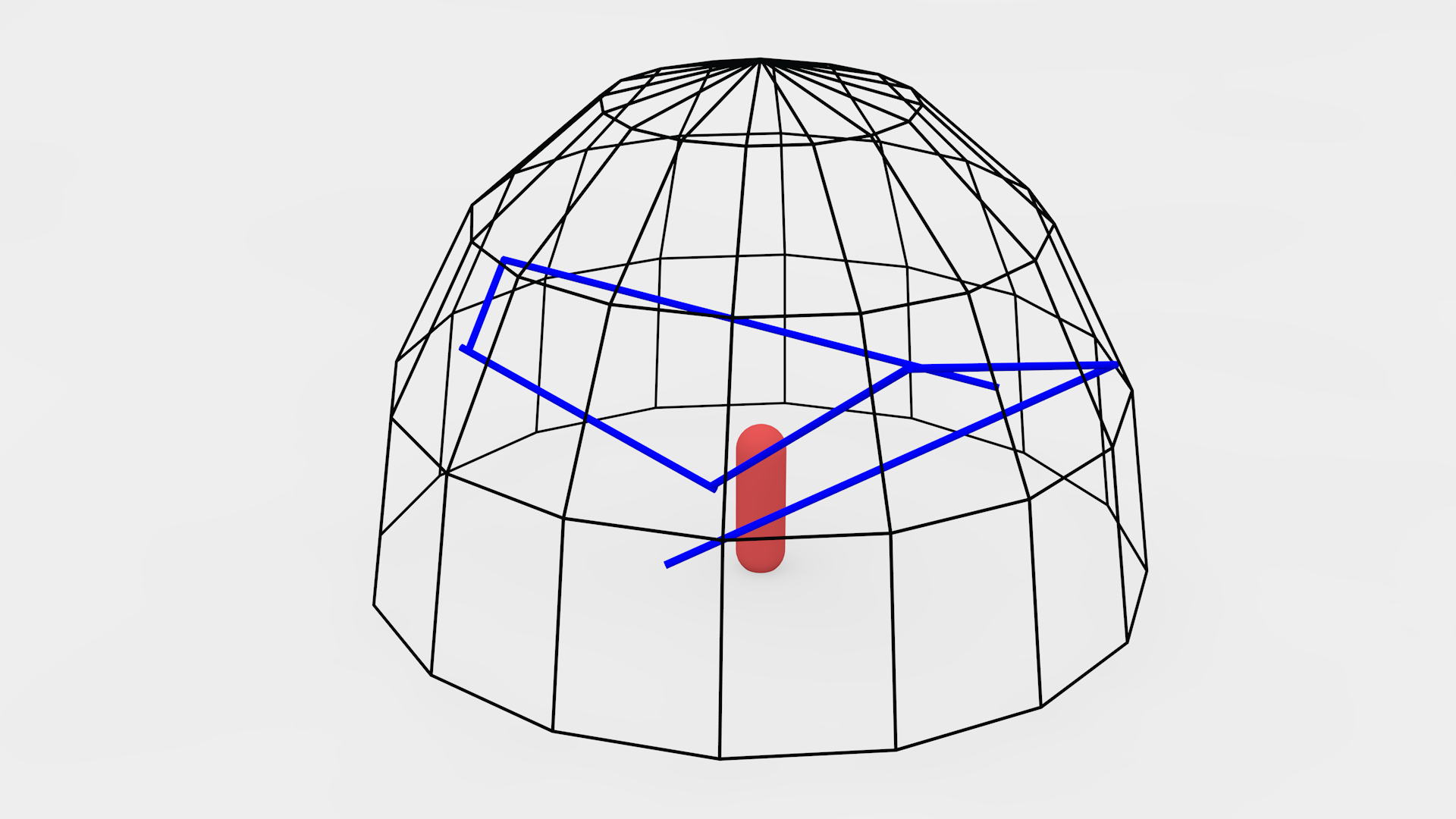
















[ SOUND INSTALLATION. COMPUTER- RESYNTHESISED SOUND. 25X4 MULTICHANNEL AUDIO IN A HEMISPHERICAL DOME ]
Discrete-composite is a generative sound installation which represents a “constant sequence of spaces” (Leitner 1971) through a superimposed non-vectorial time of events that shape an unmaterial virtual space. The sound has been composed designing algorithmic granular synthesis systems arranged in different synthesis modules based in material properties as morphology, density and colour. The sound creates different discrete and fragmented positions in the room in order to shape abstract architectures through chaotic-based sound trajectories. The spatialisation system varies in intensity, rhythm and movement dynamics. Therefore, the spatialisation has been designed as a constant course of sound among twenty-four loudspeakers, and the sound itself defines drawings and abstract structures in space which never repeat the same pattern, constituting an infinite configuration of immaterial objects.
Time organisation is based on a juxtaposition and superimposition of elements with an ambiguous linear projection reduced to phrase level. Sometimes sounds are organised through undetermined systems of repetition, accumulation, or dissemination of the grains. It is impossible to give an exact timing of when this happens, since sound behaviour is frantically changing. The intention was to create a non-teleological fluctuation which does not work in a larger “time vectorisation” of sound.
The physical room layout consists in a loudspeaker cylinder entitled SPIRAL, a 25.4 multichannel space with a sweet spot, located in the University of Huddersfield. Discrete- composite’s whole sonic object is represented as a big space, like an immaterial room. The different ‘sections’ are the different specific sonic architectures inside the actual physical room, composed by a series of immaterial virtual architectures.